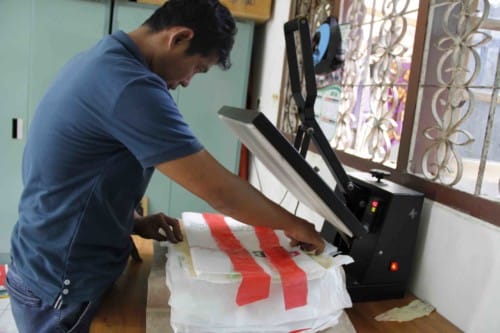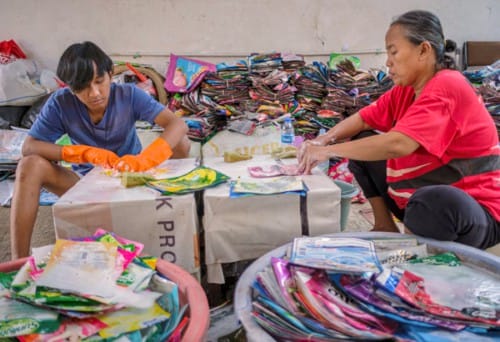What’s the Difference Between Recycling and Upcycling?
In the quest for a more sustainable lifestyle, understanding the nuances between recycling and upcycling can help us make more environmentally conscious choices. While both practices aim to reduce waste, they differ significantly in process, outcome, and environmental impact.
Let's dive into these eco-friendly approaches that are reshaping how we think about "trash."
Key Takeaways
- Recycling transforms waste into new products, while upcycling creatively repurposes materials into higher-quality items.
- The concept of recycling has a long history, whereas upcycling has surged in popularity in recent years as a sustainable practice.
- Recycling conserves resources and reduces landfill waste, while upcycling minimizes carbon footprints by avoiding new material production.
- Recycled products may be of equal or lesser quality, whereas upcycling typically enhances the value of the original materials.
- Growing consumer interest in sustainability is expected to drive the popularity of upcycling in the future.
Understanding Recycling and Upcycling
Before we compare these practices, it's essential to understand what each entails and how they contribute to sustainability in their unique ways.
Definition of Recycling
Recycling is an industrial process that transforms waste materials into new products by breaking them down into raw materials. Think of your plastic bottles being collected, processed, melted down, and transformed into new plastic products.
This process typically occurs in specialized facilities where materials are sorted, cleaned, and processed through various mechanical and chemical treatments.
Definition of Upcycling
Upcycling, on the other hand, is the creative repurposing of waste materials into new products of higher quality or value without breaking them down. It's about seeing potential in what others consider trash.
When you transform an old wooden ladder into a bookshelf or convert worn-out jeans into a trendy tote bag, you're upcycling. The original material maintains its form but finds new life and purpose.
Historical Context
The journey of these sustainable practices reveals how our relationship with waste has evolved over time.
Evolution of Recycling Practices
Recycling isn't a modern invention—it's been around for centuries, though not always in the form we recognize today. During World War II, materials like metal, rubber, and paper were commonly recycled due to resource scarcity.
The modern recycling movement gained momentum in the 1970s with the first Earth Day celebration, leading to the development of municipal recycling programs we now take for granted. Today, recycling has become a standardized practice in many parts of the world.
Rise of Upcycling in Recent Years
While recycling has a longer history, upcycling has gained significant popularity in the last decade as environmental consciousness has grown. The term itself was coined relatively recently, in the 1990s.
Social media platforms like Pinterest and Instagram have fueled the upcycling trend, showcasing creative transformations and DIY projects. What began as a niche hobby has evolved into a movement embraced by crafters, designers, and eco-conscious consumers alike.



Environmental Impact
Both practices offer environmental benefits, but they do so in different ways and to varying degrees.
Benefits of Recycling
Recycling significantly reduces the need for raw material extraction, conserving natural resources and reducing landfill waste. For materials like aluminum, the energy savings are substantial—recycling aluminum uses approximately 95% less energy than producing it from raw materials.
However, recycling isn't perfect. The process can be emissions-intensive, especially for certain materials, and not everything put in recycling bins actually gets recycled due to contamination or market limitations.
Advantages of Upcycling
Upcycling shines in its minimal environmental footprint. Since it typically requires little to no industrial processing, it consumes less energy and produces fewer emissions than recycling.
Additionally, upcycling diverts items from landfills that might not be suitable for conventional recycling programs. When you upcycle a wooden pallet into a coffee table, you're not only avoiding waste but also reducing the demand for new furniture production.
Quality and Value Comparison
The output quality and value of recycled versus upcycled items reveal another key distinction between these practices.
Quality of Recycled Products
In the recycling process, materials often undergo what's called "downcycling"— resulting in products of equal or lesser quality than the original. Plastic bottles, for instance, can rarely be recycled into new food-grade bottles due to quality degradation.
Each recycling cycle typically diminishes material quality, which is why many recycled products contain a blend of virgin and recycled materials to maintain performance standards.
Value Enhancement through Upcycling
Upcycling stands apart in its ability to enhance the value of materials. By applying creativity and craftsmanship, ordinary waste items transform into unique, desirable products that often command premium prices.
For example, a designer might transform discarded fire hoses into luxury handbags or convert wine bottles into elegant light fixtures. These upcycled items typically fetch higher prices than their original components or conventionally recycled alternatives.
Trends and Future Outlook
As environmental concerns grow, both practices continue to evolve and gain prominence in our sustainability toolkit.
Growing Interest in Sustainable Practices
Consumer demand for sustainable products has skyrocketed in recent years, driving innovation in both recycling and upcycling. Brands increasingly highlight their ecocredentials, with many incorporating recycled or upcycled materials into their product lines.
Social media has amplified this trend, creating communities around sustainable living practices and providing platforms for sharing ideas and inspiration. The DIY movement has particularly embraced upcycling as both an environmental statement and a form of creative expression.
Predictions for Upcycling Popularity
Experts predict that upcycling will continue to gain momentum, especially as concerns about overconsumption and waste increase. The unique, one-of-a-kind nature of upcycled items appeals to consumers seeking alternatives to mass-produced goods.
We're likely to see more businesses built around upcycling concepts, from furniture makers using reclaimed wood to fashion designers incorporating vintage fabrics. As one industry expert notes, "Upcycling is becoming less of a trend and more of a permanent shift in how we view materials and waste."
Conclusion
Both recycling and upcycling play vital roles in our journey toward sustainability, though they approach the challenge from different angles. Recycling offers a systematic solution for processing large volumes of waste, while upcycling provides a creative, value-adding alternative that often yields unique products.
The ideal approach combines both practices: recycling what can be efficiently processed at scale and upcycling items that benefit from creative transformation. By understanding the strengths and limitations of each method, we can make more informed choices about how to minimize our environmental footprint.
In the end, whether you're tossing that glass bottle in the recycling bin or transforming it into a decorative vase, you're contributing to a more sustainable future—and that's what truly matters.
